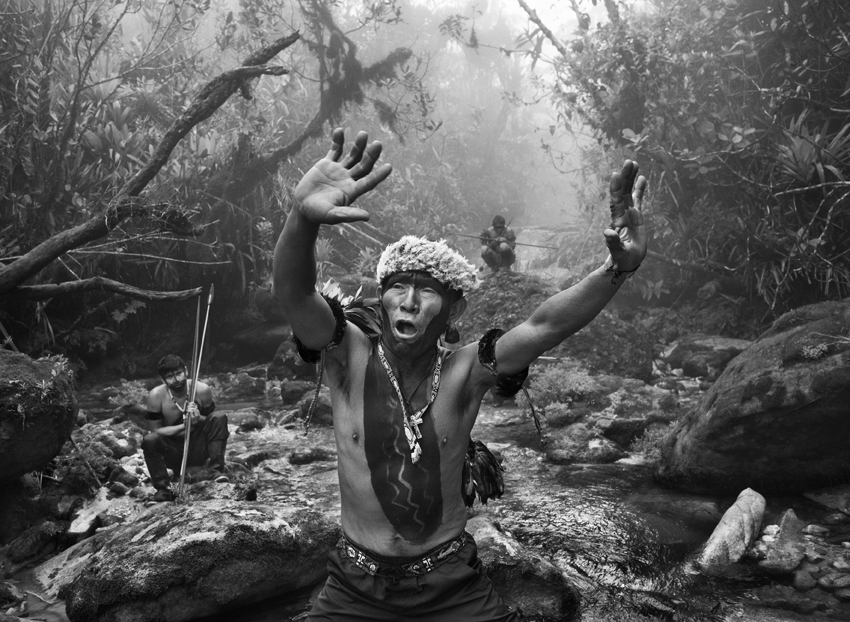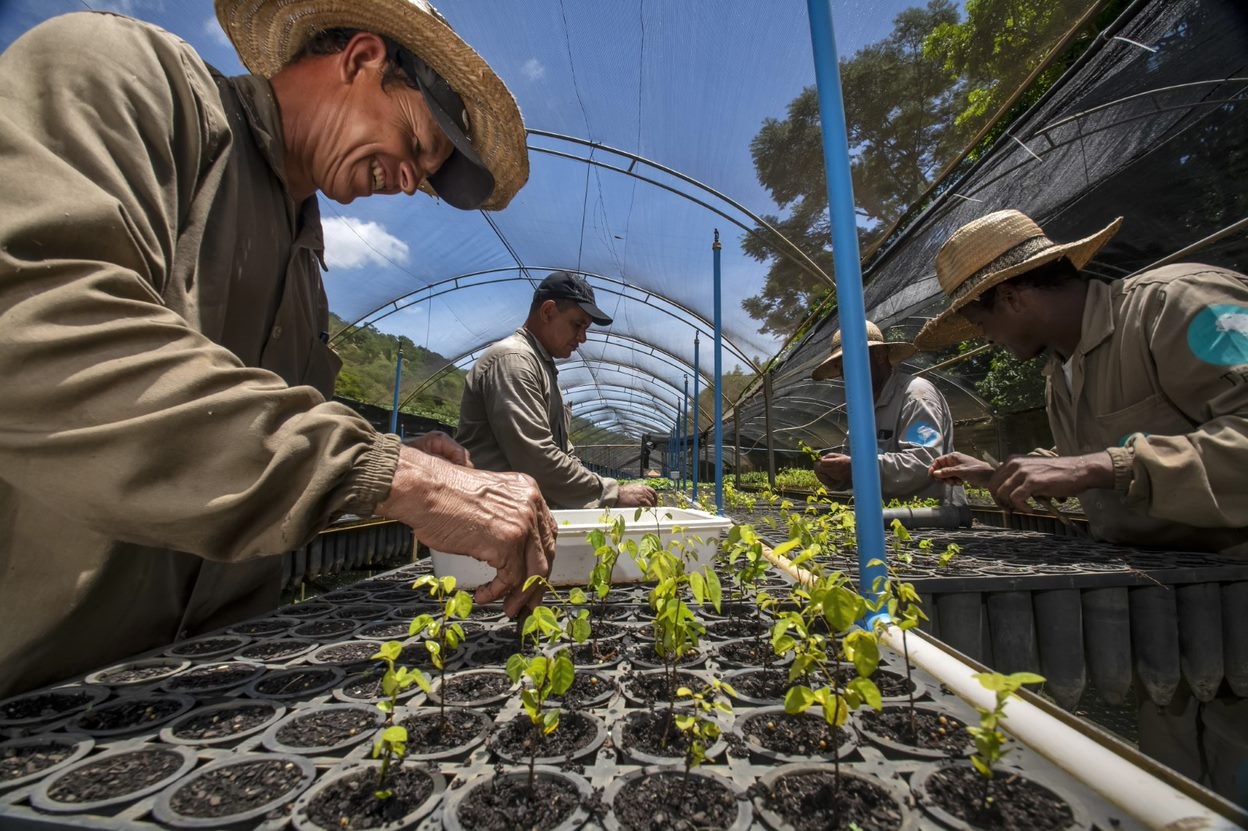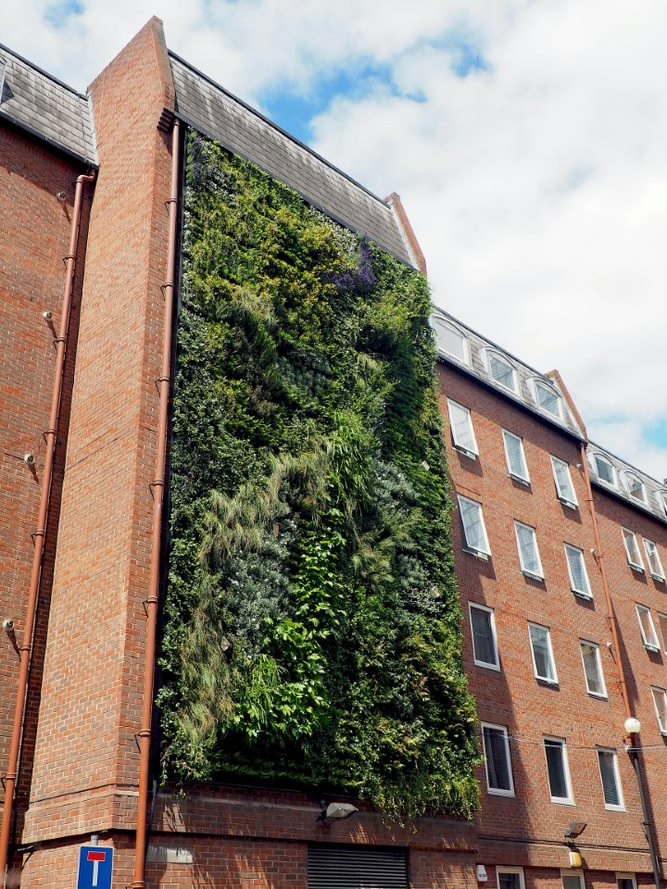In September 2020, Sir David Attenborough called on us to ‘rewild the world’ in a year that saw many of us reconnect with local nature throughout the COVID-19 pandemic. Rewilding is the restoration of ecosystems to the point where nature is allowed to take care of itself. It can help to reverse species extinction, tackle climate change and improve our overall health and wellbeing. Rewilding requires a rebalancing of nature and people.
One particular focus for rewilding is planting trees or the reforestation of threatened ecosystems. Forests provide the oxygen we breathe, absorb carbon emissions, and provide crucial habitats.

In the Science Museum’s latest exhibition Amazônia, Sebastião Salgado’s photographs show us one of the ecosystems most in need of reforesting – the Brazilian Amazon – alongside his revolutionary work regrowing Brazil’s Atlantic Forest at the Instituto Terra.
But rewilding can also be smaller scale and urban, working to make cityscapes a space for species diversity. Below we hear from three projects working to rewild the world, from the Brazilian Amazon to the UK’s London Bridge.
Instituto Terra
Sílvia Almeida da Costa has a Masters in communication. As Head of Communication at Instituto Terra, she brings awareness to its positive example for the world and encourages more people to make a difference in the environment.
Tell us about your work
Instituto Terra was born from the dream of bringing to life the exuberant forest that existed on farmlands owned by the Salgado family. The 700 hectares of farmland is located in a region that was once covered with Atlantic Forest — a Brazilian biome that was once rich in biodiversity but is devastated with only 12.4% of its cover remaining.

Instituto Terra has been restoring the forest ecosystem, planting more than 2.4 million trees and setting up a nursery to produce quality native seedlings. We take care of all stages of seedling production: from seed collection, through identification and tests in a seed laboratory, to sowing, growth and development in the nursery.

We share our work with children, young people and adults in the region through our environmental education projects as well as the conservation and recovery of water springs across the wider Doce River Basin.
Why is rewilding so crucial in the fight against the climate crisis?
Trees are awesome beings. They play important roles in the ecosystem and are great allies in fighting climate change. Trees prevent flooding by gently infiltrating rainwater into the ground; their roots prevent soil erosion and river filling; their leaves provide shade, and fallen leaves keep the soil rich in nutrients. Trees also bear fruit and provide shelter for animals; they reduce ambient temperature and air pollution and absorb carbon.

When reforesting, it is vital to plant the right tree in the right place, facilitating the return of life. Biodiverse forests are more resistant to pests, diseases and the effects of climate change. It is important to promote the balance of the forest, and we do this by planting native species from the region.
What actions can each of us take to help with rewilding, however small?
The first step is to reconnect with nature and understand that we are part of it. The planet needs quick action, here are a few points to get started:
- Study, develop critical thinking and strengthen your environmental awareness.
- Buy local products. In addition to stimulating the local economy, you help reduce greenhouse gas emissions, as the freight distances travelled by trucks and other vehicles are shorter.
- Use less polluting means of transport. Walk, bicycles, electric scooters or public transport help to reduce the environmental impact of our journeys.
Permian Global
Stephen Rumsey is the Chairman of Permian Global. He is a life-long environmental conservationist and has served on the boards of numerous environmental non-profits, while also having acted as Deputy Chairman/Treasurer of Birdlife International.
Tell us about your work
Permian Global develops large-scale tropical forest protection and recovery projects. The projects combine current scientific thinking on ecosystem dynamics, carbon measurements and conservation, with carefully planned social development programmes and a recognition of the growing government and corporate commitments to environmental responsibility. Natural environments like tropical forests provide countless ecosystem services that many of us take for granted, including water filtration, oxygen, food, fuel, and medicines. While forests are also home to many local and indigenous communities.

Protecting tropical forests is also pivotal in our efforts to prevent dangerous climate change, thanks to their amazing ability to draw down and store vast amounts of carbon.
Why is rewilding so crucial in the fight against the climate crisis?
Climate science is a highly complex topic, as there are many factors that are contributing to the excessive volume of greenhouse gases in the atmosphere today. We know that overwhelmingly it is our burning of fossil fuels that is tipping the scales towards catastrophe. Globally, we must address this fast through the decarbonisation of industries.
But how humankind is treating the natural world is also an important source of emission and a key driver in the alarming rate of species extinction. Protecting important carbon sinks like fast-growing tropical forests, mangroves and peatlands is a vital piece of the puzzle when it comes to mitigating the climate crisis. Complex, species-rich ecosystems are more resilient and able to adapt to environmental shocks, like warming temperatures. The more we protect nature, the more benefits we gain from the natural world, the better it is for all of us.
What actions can each of us take to help with rewilding, however small?
Nature has had millions of years to hone and perfect the ideal conditions for life on Earth that have allowed humans to prosper. It is our job to ensure nature has the space to grow and maintain its wild, tangled diversity.

We work to protect enormous areas of tropical forest so that the trees, plants and other biomass can do what they do best, grow! And this simple concept can be used everywhere. If you have a garden, leave parts of it to grow wild. If you can petition for public spaces to be set aside for nature, replant if it is needed, and then just watch how quickly wildlife returns.
Team London Bridge
Henry Johnstone is the Operations Director at Team London Bridge. Having grown up in rural Suffolk and worked for a garden designer in his younger days, he’s lucky enough to bring that passion for horticulture and wildlife into the heart of urban London
Tell us about your work
Team London Bridge is a Business Improvement District (BID) operating in one of the most historic, iconic and varied parts of the UK capital. We’re a not-for-profit organisation funded by approximately 400 local businesses.

One of our major responsibilities is to improve and create a network of public green spaces – rewilding in an urban context – where we take a holistic approach to ensure that our parks and gardens contribute to tackling the impacts of climate change: improving air quality, reducing flooding, increasing biodiversity and creating healthy streets to encourage walking and cycling. Our prime location has a great impact in showcasing these mini rewilding projects to a large audience.
Why is rewilding so crucial in the fight against the climate crisis?
According to the United Nations urban environments account for 78% of energy consumption and 60% of carbon emissions. By 2050 68% of the world’s population will be urbanised, therefore not only are cities major contributors to climate change but they are also where its effects on society will be most acutely felt.
Extreme weather events exacerbated by climate change will mean more flooding in London, so several of our re-wilding schemes are designed to manage this risk. Our ‘living walls’ collect rainwater from the roofs above where it’s then used to irrigate plants rather than overwhelm the drainage system. We’re working with the local council and water company to build ‘rain gardens’ in flooding hotspots – street-level, sunken planting beds that use soil and vegetation to absorb surface water run-off.

To mitigate wildlife habitat loss, we also endeavour to re-wild every small plot of land we can. In 2019 we built a series of temporary gardens using recycled materials inside London Bridge train station illustrating not only the value of recycling but also how we ought to be integrating nature into our built environment.
What actions can each of us take to help with rewilding, however small?
Whilst not everyone has access to a garden of their own, there may be opportunities to volunteer with local community groups or formal organisations like Wildlife Trusts who are running re-wilding schemes. The Royal Horticultural Society has information on how you can get involved with initiatives near you.

If you have a garden of your own there are simple steps to take like reducing how often you cut your lawn (or even stopping entirely), trimming hedges in late winter/early spring so birds can make use of them for food and nesting, choosing native trees and plants (see The Woodland Trust for advice) and growing plants from seeds or cuttings rather than buying imports from abroad which carry the risk of disease.
Finally, of course, it’s important to respect and protect our green spaces when enjoying them by staying to marked paths, keeping dogs on leads to avoid disturbing wildlife (particularly during the spring) and disposing of litter responsibly.
After a successful run at the Science Museum in London, Amazônia is on at the Science and Industry Museum in Manchester from 13 May – 14 August 2022. Book tickets now.
